
George Julius Poulett Scrope FRS was an English geologist and political economist as well as a Member of Parliament and magistrate for Stroud in Gloucestershire.

Castle Combe is a village and civil parish within the Cotswolds Area of Outstanding Natural Beauty in Wiltshire, England. The village is around 5 miles (8 km) north-west of Chippenham. A castle once stood in the area, but was demolished centuries ago.

Sir John Fastolf was a late medieval English soldier, landowner, and knight who fought in the Hundred Years' War. He has enjoyed a more lasting reputation as the prototype, in some part, of Shakespeare's character Sir John Falstaff. Many historians argue, however, that he deserves to be famous in his own right, not only as a soldier, but as a patron of literature, a writer on strategy and perhaps as an early industrialist.
Scrope is the name of an old English family of Norman origin that first came into prominence in the 14th century. The family has held the noble titles of Baron Scrope of Masham, Baron Scrope of Bolton, and for a brief time, the Earl of Wiltshire.

Biddestone is a village and former civil parish, now in the parish of Biddestone and Slaughterford, in the Wiltshire district, in northwest Wiltshire, England, about 3 miles (5 km) west of Chippenham and 2 miles (3.2 km) north of Corsham. The parish includes the smaller settlement of Slaughterford.

Avebury Manor & Garden is a National Trust property consisting of a Grade I listed early-16th-century manor house and its surrounding garden. It is in Avebury, near Marlborough, Wiltshire, England, in the centre of the village next to St James's Church and close to the Avebury neolithic henge monument.

Lea is a village in Wiltshire, England, lying approximately 1.5 miles (2.4 km) east of Malmesbury. It is part of the civil parish of Lea and Cleverton which includes the village of Garsdon and the hamlet of Cleverton. Garsdon was a separate parish until 1934.
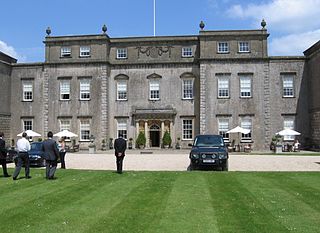
Ston Easton Park is an English country house built in the 18th century. It lies near the village of Ston Easton, Somerset. It is a Grade I listed building and the grounds are listed Grade II on the Register of Historic Parks and Gardens.

Upsall Castle is a fourteenth-century ruin, park and manor house in Upsall, in the Hambleton district of North Yorkshire, England.

Stourton with Gasper is a civil parish in the southwest of the English county of Wiltshire. Its main settlement is the village of Stourton, along with the hamlets of Bonham and Gasper. The village is about 2+1⁄2 miles (4 km) northwest of the small town of Mere, and is part of the Stourhead estate, which includes much of the west of the parish. The estate is in the ownership of the National Trust, and the entrance to the estate's famous house and garden is through the village.
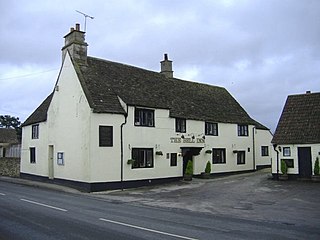
Yatton Keynell is a village and civil parish in Wiltshire, England. The village is on the B4039 road near Castle Combe, about 4 miles (6 km) northwest of Chippenham, and about the same distance to the east of the county border with South Gloucestershire.

Redlynch is a village and former manor in the civil parish of Bruton, in the South Somerset district of Somerset, England. The 18th-century church and a folly named The Towers are of architectural interest.
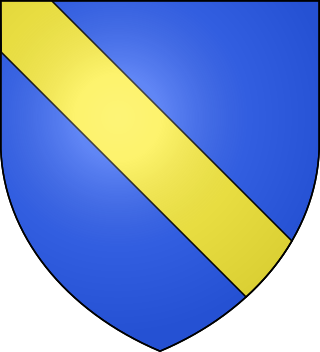
Richard le Scrope, 1st Baron Scrope of Bolton was an English soldier and courtier, serving Richard II of England. He also fought under the Black Prince at the Battle of Crecy in 1346.
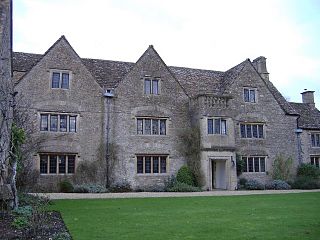
Bolehyde Manor is a 17th-century manor house at Allington, north-west of Chippenham, in Wiltshire, England. It is a Grade II* listed building within the Allington conservation area of Chippenham Without parish. Camilla Parker Bowles lived at the house between 1973 and 1986, during her first marriage.

Kilmington is a village and civil parish in the extreme west of Wiltshire, England, about 8 miles (13 km) southwest of Warminster. The parish includes the hamlets of Kilmington Common and Norton Ferris.

Hutton Court is a country house at Hutton, Somerset, England, built in the 15th century as a manor house. It is Grade II* listed on the National Heritage List for England. In addition to the main house, the boundary wall, summerhouse and the gates and piers to the hall are all separately Grade II listed. and stands immediately to the south of the parish church.

Bishopstrow Hotel & Spa is a late-Georgian English country house standing near the B3414 in the parish of Bishopstrow, about a mile east of Warminster, in Wiltshire in southern England.
Wilbury House or Wilbury Park is an 18th-century Neo-Palladian country house in the parish of Newton Tony, Wiltshire in South West England, about 8.7 miles (14 km) northeast of Salisbury. It is a Grade I listed building, and the surrounding park and garden are Grade II listed.

St Andrew's is a parish church in Castle Combe, Wiltshire, England, built in the 13th century with additions in later centuries. It was restored due to structural concerns in the 19th century. It is a Grade I listed building.
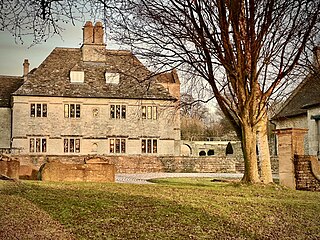
Rudloe Manor is a 17th-century Grade II* listed manor house in Box parish, Wiltshire, England.



















